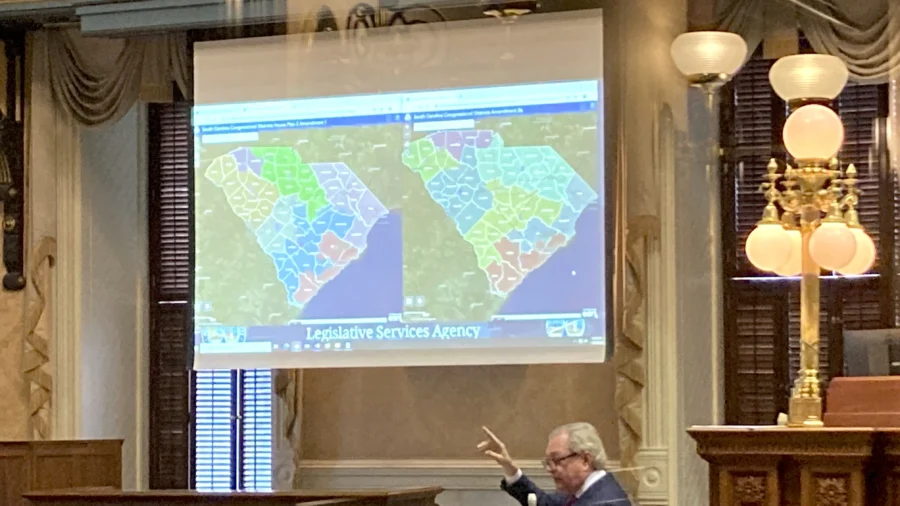A three-judge panel ruled on March 28 that South Carolina must use a congressional map that the same court previously struck down for racial gerrymandering in the state’s upcoming elections.
The map, drawn by South Carolina’s Republican-controlled legislature, bolsters the GOP’s advantage in the state’s 1st Congressional District—the seat currently held by Republican Rep. Nancy Mace.
In January 2023, the U.S. District Court for the District of South Carolina ruled that the map’s redrawing of District 1 constituted a racial gerrymander in violation of the 14th Amendment. Accordingly, the three-judge panel enjoined congressional elections in the district until a new, valid plan could be drawn.
State lawmakers have appealed that decision to the U.S. Supreme Court. But with election deadlines looming and still no ruling from the nation’s high court, the district court said it had no alternative but to amend its previous injunction “to preserve the status quo on appeal.”
“Having found that Congressional District No. 1 constitutes an unconstitutional racial gerrymander, the Court fully recognizes that ‘it would be the unusual case in which a court would be justified in not taking appropriate action to insure that no further elections are conducted under an invalid plan,” the judges’ order reads.
“But with the primary election procedures rapidly approaching, the appeal before the Supreme Court still pending, and no remedial plan in place, the ideal must bend to the practical.”
South Carolina’s primary election for state races is slated for June 11. The candidate filing deadline is April 1, and the deadline to send out military and overseas absentee ballots is April 27.
Those deadlines, the court held, make it “plainly impractical” for the court to adopt a new plan in time for the primary.
State lawmakers had also filed an emergency application for a stay of the injunction with the Supreme Court, but the court had yet to issue a ruling.
At a hearing before the high court in October, the Republican state lawmakers’ attorney, John M. Gore, argued that the challenged map was drawn based on politics, not race.
Mr. Gore said the General Assembly “largely preserved District 1 from the constitutional benchmark plan and made changes based on traditional criteria and politics.” And any correlation with race, he stressed, was purely coincidental.
While the Supreme Court frowns upon racial gerrymandering, it has taken a hands-off approach toward partisan gerrymanders in the past.
“Partisan gerrymandering claims can always be repackaged as racial gerrymandering claims if all plaintiffs in lower courts have to do is ignore direct evidence of intent, infer a racial target from the correlation between race and politics, and point to malleable expert analysis,” he argued.
But Justice Sonia Sotomayor told Mr. Gore that circumstantial evidence of race-based targeting can be enough. She noted that in Cooper v. Harris (2017), the court was “clear you don’t need a smoking gun, and if you don’t need a smoking gun, you don’t need direct evidence.”
Justice Samuel Alito, however, said the high court was not required to “simply rubber-stamp” the district court’s findings, “particularly in a case in which … the basis for a judgment in favor of the [NAACP] relies very heavily, if not entirely, on expert reports.”
Plaintiffs in the case include a black voter and the South Carolina State Conference of the NAACP.
NAACP attorney Leah Aden argued that the district court was correct to find “that race predominated over partisanship” in the map’s design.
“Mapmakers sorted more than 30,000 black Charlestonians based on their race, removing 11 of the 12 precincts with the highest black voting-age populations,” Ms. Aden said. “This massive movement disregarded the least change approach that the state applied statewide and that mapmakers admitted they abandoned only in Charleston County, which had been [the 1st Congressional District’s] historical anchor.”
But Chief Justice John Roberts responded that the plaintiffs had provided “no direct evidence” that the changes were made based on race.
Matthew Vadum contributed to this report.
From The Epoch Times


